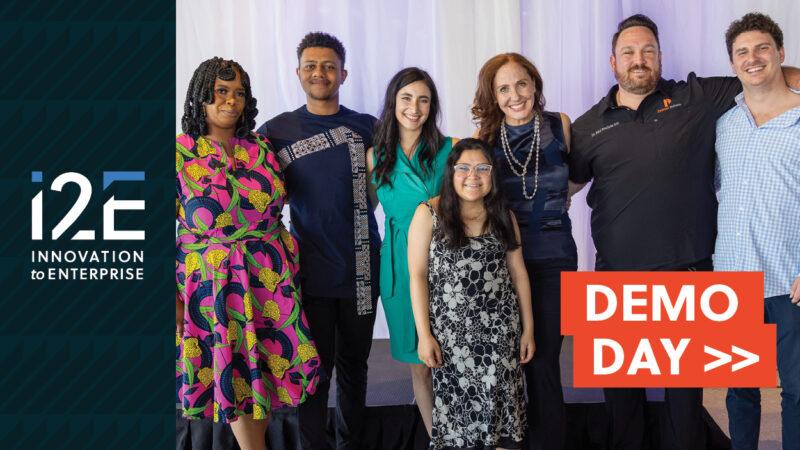An Emerging Tech Center: Oklahoma City creating the “Power of Place”
By Jim Stafford
Copyright © 2016 | Innovation America
Two decades after Oklahoma City embraced a groundbreaking initiative that remade the city through a series of pay-as-you-go projects, another initiative is emerging with implications for economic development. In October, the Brookings Institution announced that Oklahoma City is one of two pilot cities included in a study about developing an innovation district in an area of the city heavily focused on biotechnology research.
The study of the innovation ecosystems in both Oklahoma City and Philadelphia were the first announced since the establishment of the Anne T. and Robert M. Bass Initiative on Innovation and Placemaking, a collaboration between Brookings and the not-for-profit Project for Public Spaces.
Brookings is working with Oklahoma City partners to determine how best to develop the Oklahoma Health Center campus and adjacent Automobile Alley into a vibrant innovation district in which people can live, work and play. The partnership includes the Oklahoma Health Center Foundation, the Greater Oklahoma City Chamber, the Presbyterian Health Foundation and the Alliance for Economic Development.
The 325-acre Oklahoma Health Center campus is located just east of downtown and across the Centennial Expressway from Automobile Alley, which is an area of small retail, restaurants and bars. Developed into a formal innovation district, the area would connect entrepreneurs, scientists and even medical students on the Health Sciences Center campus in more informal ways than currently possible, said Stephen Prescott, M.D., president of the Oklahoma Medical Research Foundation (OMRF). The foundation, also part of the Brookings initiative, is located in the heart of the Health Sciences Center and employs more than 500 scientists and administrative personnel.
“One of our challenges right now is that the Health Sciences Center is not conducive to chance interactions,” Prescott said. “You don’t just bump into people. The idea here is to encourage this type of behavior by connectiveness and making places where people can meet and eat easily.”
Innovation districts also feature density in development, housing, walkability and amenities that draw people out of their laboratories and offices. Areas identified as innovation districts already are operating in several other large cities nationwide. In a landmark paper entitled The Rise of the Innovation Districts, Brookings said such areas are emerging in Boston, Brooklyn, Chicago, Portland and San Francisco, among others.
Terry Taylor, President of the Oklahoma Health Center Foundation, describes the ultimate goal of an Innovation District as “placemaking.” The current Health Center campus is full of wide streets, unconnected buildings and no place where people can live if they choose or even casually gather. “We are looking to make better physical places within this geographic area,” Taylor said. “We can create a commercial area that will be a people place and will have different uses, different commercial activities. There can by a downtown center, for instance, a nucleus for people to come together when the come to get their lunch, their coffee, whatever. The benefits will be whatever spins off from all of that.”
Brookings also suggested taking bold steps to connect the Oklahoma Health Sciences campus to the Automobile Alley to the west, which would require building a “cap” over the six-lane Centennial Expressway. That “cap” might be a pedestrian bridge, but also could even be a more ambitious park-like green space, said Roy Williams, President of the Greater Oklahoma City Chamber. “Brookings said that will be the biggest transformation your community will ever make,” Williams said. “You will have eliminated a barrier.”
Another stakeholder is the Oklahoma Center for the Advancement of Science and Technology (OCAST), which is headquartered in the University of Oklahoma Research Park on the south end of the Health Center campus. The park counts 43 private companies—many of them emerging startups—among its 54 tenants.
A formal Innovation District will tie all the key elements that spark new ideas and innovation, said Michael Carolina, OCAST executive director. “An innovation district to me means that research goes on, networking goes on, the opportunity for collaboration and partnerships goes on,” Carolina said. “It’s an integral part of growing the city’s research base, its industrial base and attracting young entrepreneurs.”
Said Scott Meacham, CEO at the not-for-profit i2E, Inc., which works with many of the state’s up-and-coming startups, the power of place will define the area. “I think when you look at the reality of what’s happening around us, we’ve got this power of place here,” Meacham said. “How do you recognize that and plan and foster and nurture the growth of that. I think that’s what the innovation district is about.”








